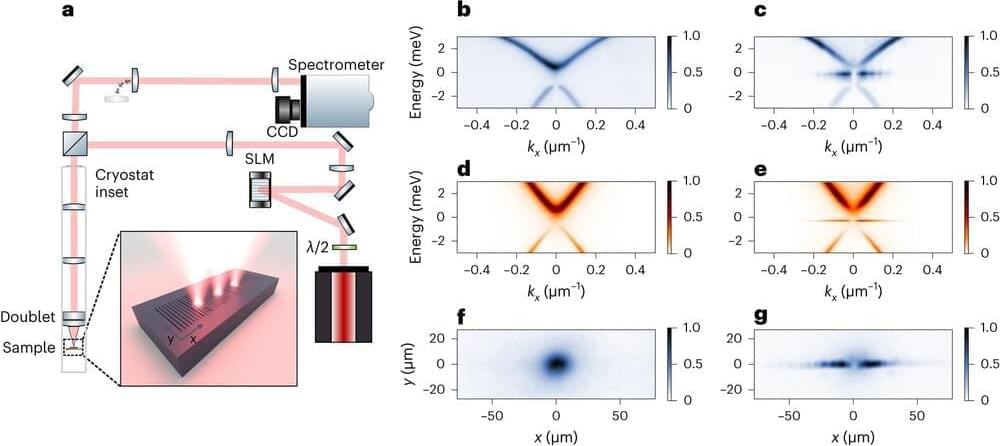Condensed matter systems and photonic technologies are regularly used by researchers to create microscale platforms that can simulate the complex dynamics of many interacting quantum particles in a more accessible setting. Some examples include ultracold atomic ensembles in optical lattices, superconducting arrays, and photonic crystals and waveguides. In 2006 a new platform emerged with the demonstration of macroscopically coherent quantum fluids of exciton-polaritons to explore many-body quantum phenomena through optical techniques.
When a piece semiconductor is placed between two mirrors—an optical microresonator—the electronic excitations within can become strongly influenced by photons trapped between the mirrors. The resulting new bosonic quantum particles, known as exciton-polaritons (or polaritons for short), can under the right circumstances undergo a phase transition into a nonequilibrium Bose-Einstein condensate and form a macroscopic quantum fluid or a droplet of light.
Quantum fluids of polaritons have many salient properties, one being that they are optically configurable and readable, permitting easy measurements of the polariton dynamics. This is what makes them so advantageous to simulate many-body physics.










Leave a reply